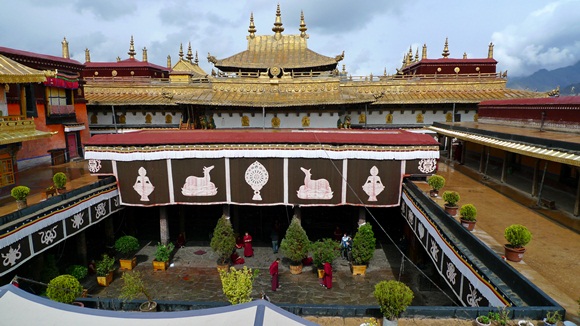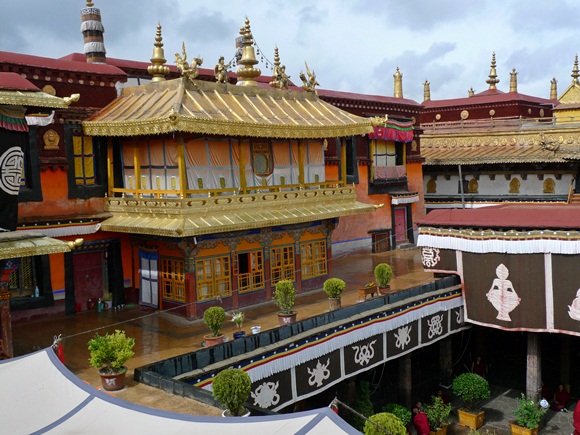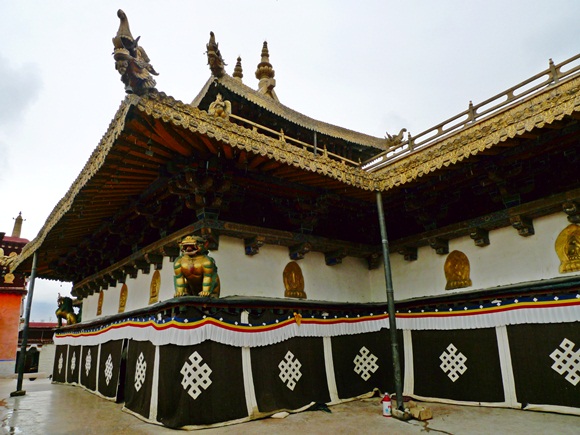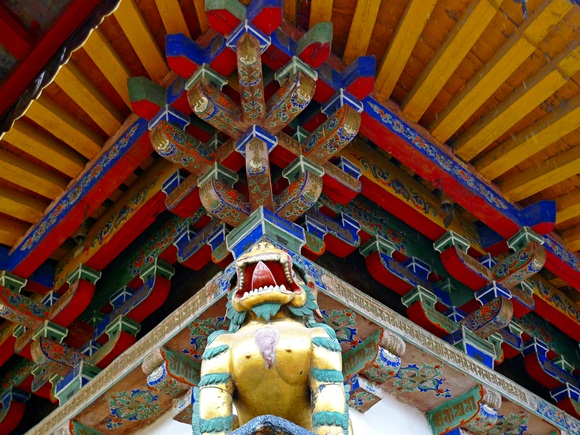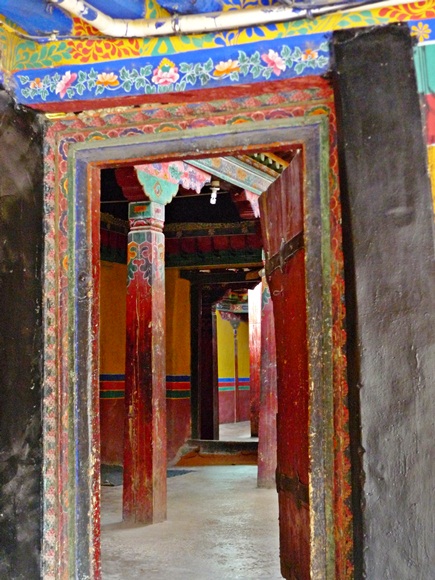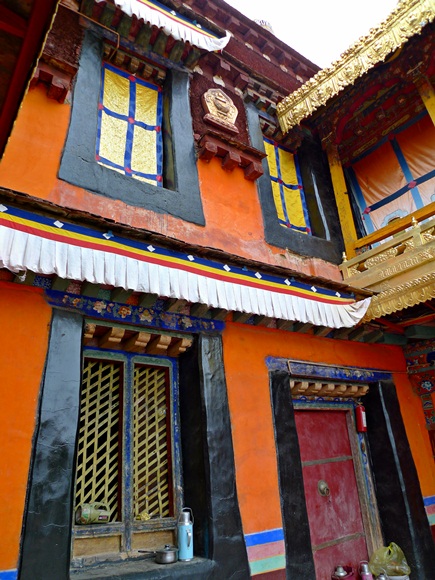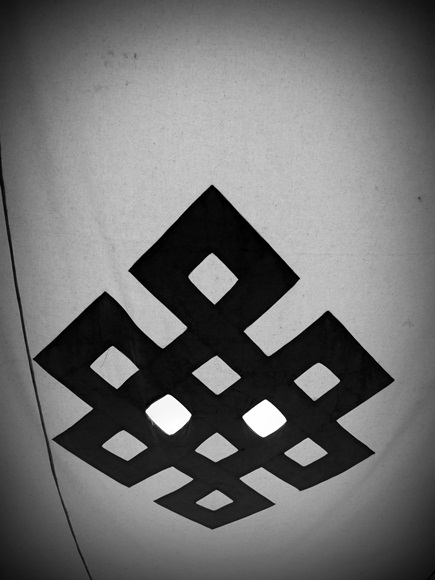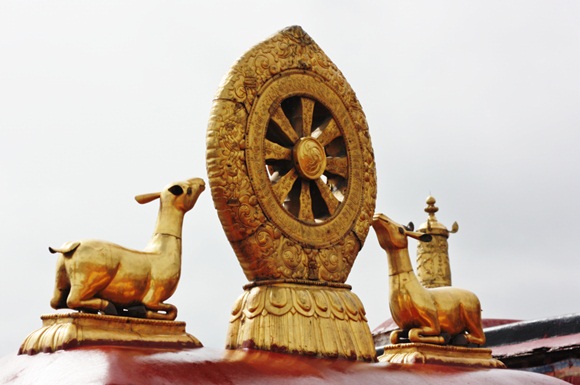Tibet: Jokhang Temple
Jokhang Temple also known as Tsuglhakhang in Tibetan is the most revered religious structure in Tibet. Situated in Lhasa, it is the first Buddhist temple in Tibet. For most Tibetans, it is the most sacred and important temple. The temple is not controlled by a particular sect of Tibetan Buddhism and it attracts followers of all the sects as well as followers of Bon-Po, Tibet’s indigenous religion.
In the middle of the seventh century, the great Tibetan King of the Tubo Kingdom, Songtsen Gampo (617- 650 AD) married the Nepalese Princess Tritsun and the Chinese Princess Wencheng, each of whom brought into Tibet a statue of Sakyamuni (present Buddha). At that time, there were very few buildings and people were living in tents. In order to enshrine and worship these two invaluable statues, Princess Wencheng suggested that they build two temples (Jokhang Temple and Ramoche Temple).
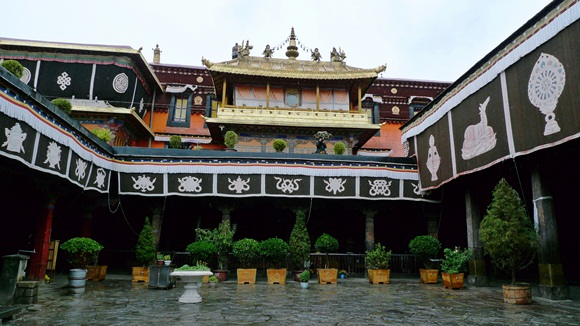
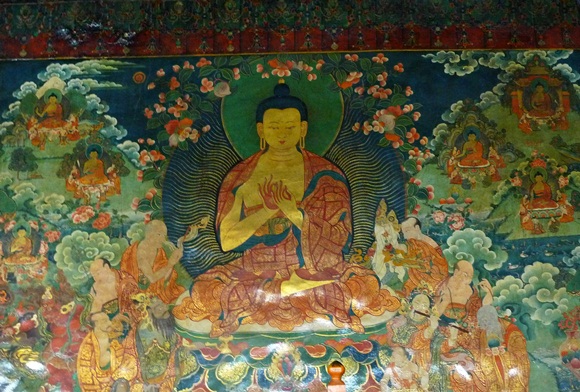
Today, the statue of twelve-year-old Sakyamuni (brought by Princess Wencheng) is housed in the Jokhang Temple.
(It is said that there are only three life-sized statues of Sakyamuni in the world that were all molded according to the appearance of Sakyamuni at the ages of eight, twelve and twenty-five. All the three statues were consecrated in India at the beginning. The statue of eight-year-old Sakyamuni, which Princess Tritsun brought to Lhasa, was damaged and is not in its full integrity today. The statue of twenty-five-year-old Sakyamuni was lost. The statue of twelve-year-old Sakyamuni is the most exquisite of the three. Princess Wencheng spent three years bringing the statue from Chang’an to Lhasa. The statue is incomparable in honour. Tibetan Buddhists trek a long way from their homes to Lhasa to worship this statue, not for the statue’s great value as a culture relic but rather they strongly believe that the statue is exactly the same appearance as Sakyamuni 2500 years ago. This is their opportunity to have a look at a real divinity. Lhasa is in part regarded as a sacred city because of this sacred statue.) Text: tibettrip.com
The temple’s architectural style is a mixture of Indian vihara design, Chinese Tang Dynasty design, and Nepalese design. The King took inspirations from their neighbours because they did not have any experience in architecture other than putting up tents.
Photography is not allowed inside all Tibetan temples, hence only pictures of the exterior are taken.
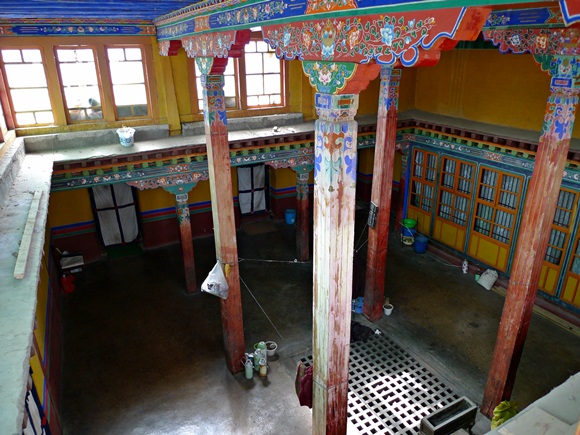
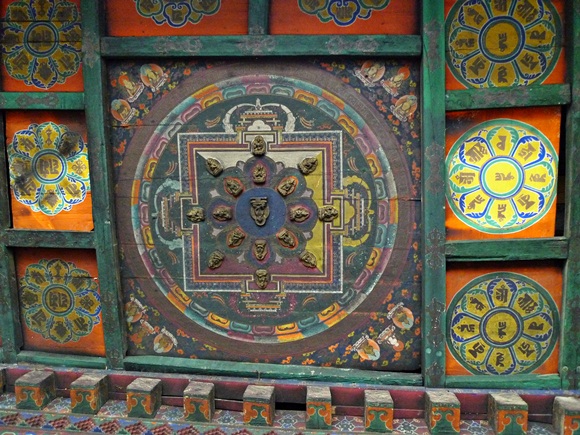
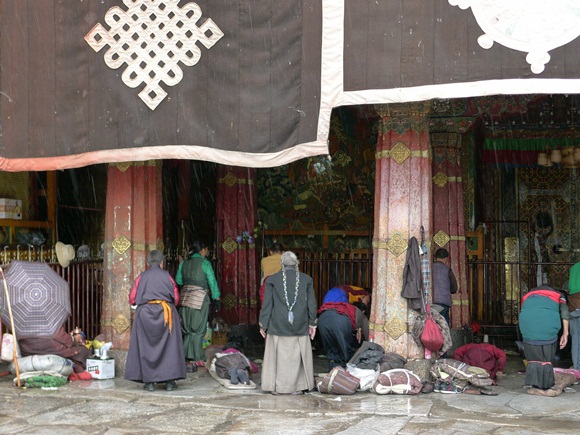
It was raining when we arrived at Jokhang, but we quickly entered once we purchased the ticket (85 RMB per person) at the side entrance. There were lots of pilgrims in and around the temple, praying and offering butter oil in designated spots. They will also touch their prayer beads on the temple walls or statues as a form of blessing. We had to keep on moving within the temple grounds as the alleyways in the prayer halls were narrow, filled with pilgrims and other tourists. It was a pity that we couldn’t stop longer to admire the interior with amazing statues glistening with precious stones.
When we got to the rooftop, it was still raining. We decided to wait it out and check out the souvenir stalls selling prayer items which have been blessed by the monks. I guess we were lucky because the rain stopped and the sun came out to play!
Then, the monks started getting ready for their afternoon debate. We were curious about how this debate will turn out. Would it be similar to what we have in uni? Nope, it’s entirely different and it was a real eye-opener. A large bell was rung to indicate the start of the debate. The monks congregated in the open courtyard and paired up. One will be seated (he answers the questions) and one will be standing (he asks the questions). The one who asks the questions is extremely animated, with kungfu-like hand gestures and poses while the one seated is silent, deep in thoughts.
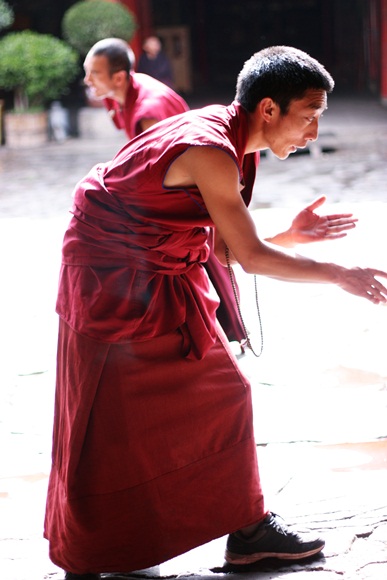
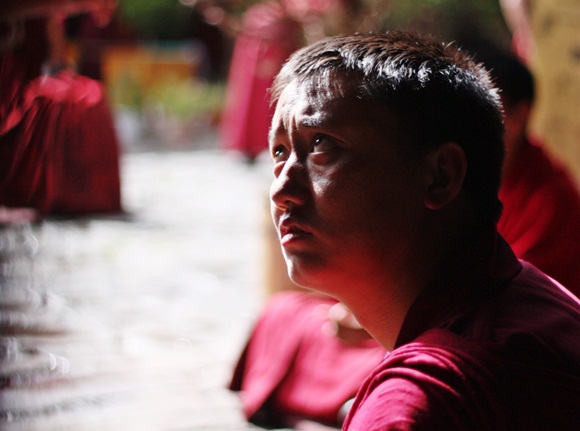
Apparently, this serves as a practice for their examination (yep, monks need to go through different levels of exams) and questions asked will be about Tibetan Buddhism which they have learned. We spent a really long time watching the debate as it was so visually interesting eventhough we didn’t understand the language. It was like a huge commotion amongst the monks! There was a really “cool” and strict discipline master overseeing the entire debate. At one point, he even took out a camera to film the rest.
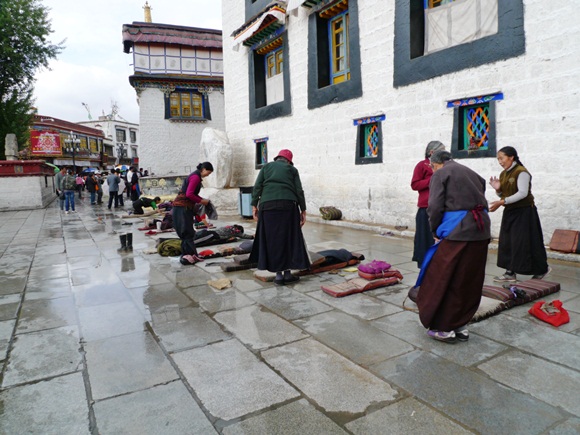
The Jokhang Temple is definitely a must-visit in Tibet since it’s right in the center of Lhasa, at the Barkhor Circuit.
